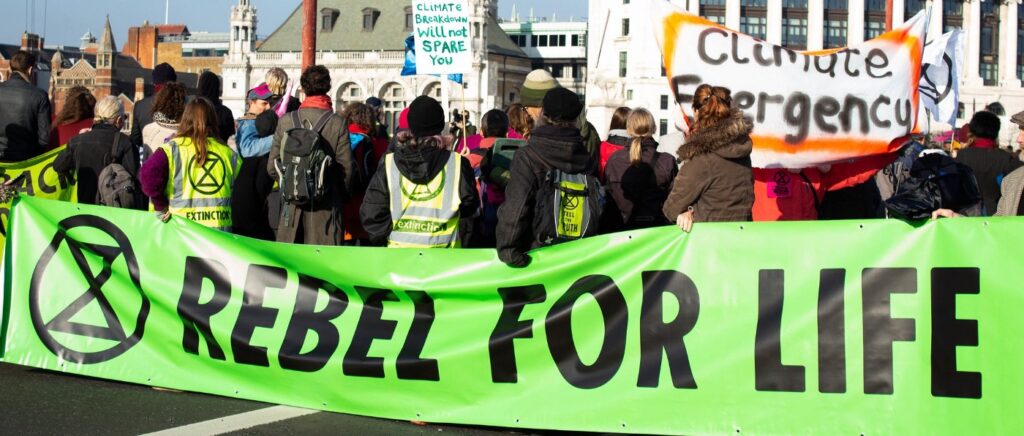Movements such as Extinction Rebellion claim we may have to give up flying to abate climate change. But is that really true?
Written by Alasdair Lumsden
May 12, 2019


Witness the rise of the recent Extinction Rebellion protests: The general public, tired from decades of inactivity by our governments, is now demanding urgent action on catastrophic climate change. But one of the narratives being peddled is that we must reduce our energy use drastically. Not only that, but we must, we are told, cut air travel back significantly, perhaps entirely.
For any of us who have friends and family abroad, or simply love to travel, this is nothing short of terrifying.

But perhaps more realistically, it’s simply not going to happen. More than half the planet took to the skies in 2017, 4.1 billion people. This is only set to rise, with 7.8 billion predicted by 2036.
So what can humanity do? Is there an alternative to this grounding narrative?
The standard approach to removing CO2 from transportation has been electrification, but unfortunately this just won’t fly for aviation (if you’ll excuse the pun). The power density of Jet Fuel vs Lithium Ion batteries is ~44MJ/kg vs 0.6MJ/kg — an order of magnitude difference. Batteries are just too heavy.
Is this likely to change? Whilst we’ve seen incremental improvements in battery capacity over the years, 10% here, 15% there, a 1000% improvement we’re unlikely to see any time soon.
Not only that, but electrification, even if it were possible, would also require replacing all 24,000 planes currently in circulation. The CO2 involved in building new planes alone would be an enormous setback for the climate.
So what can we do?
What if I told you there was a technology that can turn sea-water into CO2 neutral jet fuel, that can run in existing aircraft, without modification?
This isn’t science fiction. It’s actually science fact: a technology the US Navy is pursuing, to allow extended fleet operation without refueling ships, which can be logistically challenging in conflict zones or far from friendly ports.
Don Larson talks emphatically about the Navy’s current approach in this compelling 13 minute video:
The process works by extracting carbonic acid and hydrogen from sea water, and combining it to produce JP5 Jet Fuel. The Wikipedia article on Carbon Neutral Fuels has more information. Because CO2 in the atmosphere is in equilibrium with CO2 in seawater, the entire process is CO2 neutral.

The current process uses electricity from “Small Modular Reactors”, a type of compact nuclear fission reactor used on aircraft carriers and submarines.
The Navy believe that the cost of the fuel may be as little as $2.90/gallon — less than half the cost of delivery of jet fuel at sea. The average cost of jet fuel on the commercial market is approximately $2.80/gallon, meaning this technology is cost-competitive, at least for the Navy.
Part of this low cost is that the Navy’s nuclear reactors are significantly cheaper to build and run than civilian reactors. Their estimate is that their synthetic jet fuel, if produced from commercial electricity at 7 cents/kWh, would come in at $5.74/gallon.
Personally, I’d rather pay double for my plane ticket than not fly at all.
The exciting part of this story is that the above technology is just the beginning. The existing process is based on electricity, but a far more efficient process can be utilised if you have a high temperature heat source, driving down costs significantly.
One of the most promising developments in the field of nuclear energy is the molten salt based Generation IV reactor. These have significant benefits over existing reactors. For a start, they can’t melt down, as the liquid salt is already molten, meaning they are inherently safe vs today’s solid-fuelled reactors. They also produce significantly less waste (and indeed some designs can even consume existing nuclear waste stockpiles).
One such design comes from ThorCon. This 30 minute video gives an overview of this revolutionary technology:
What’s more, molten salt reactors can produce high temperature process heat, at over 600C (vs 300C for existing nuclear). This means a more efficient method of producing synthetic fuel can be utilised.
ThorCon’s design estimates producing electricity at 3 cents/kWh. So even using the electrical process, that theoretically means we can produce CO2 free jet fuel at market rates.
So, with the right deployment of technology, it is entirely possible that we can continue to keep flying well past 2050.
Indeed, this technology doesn’t just allow for synthetic jet fuel, but we can produce synthetic fuels of all kinds. This would allow for the decarbonisation of shipping, trucking, even space flight.
The science is sound. All we have to do now is build it.



